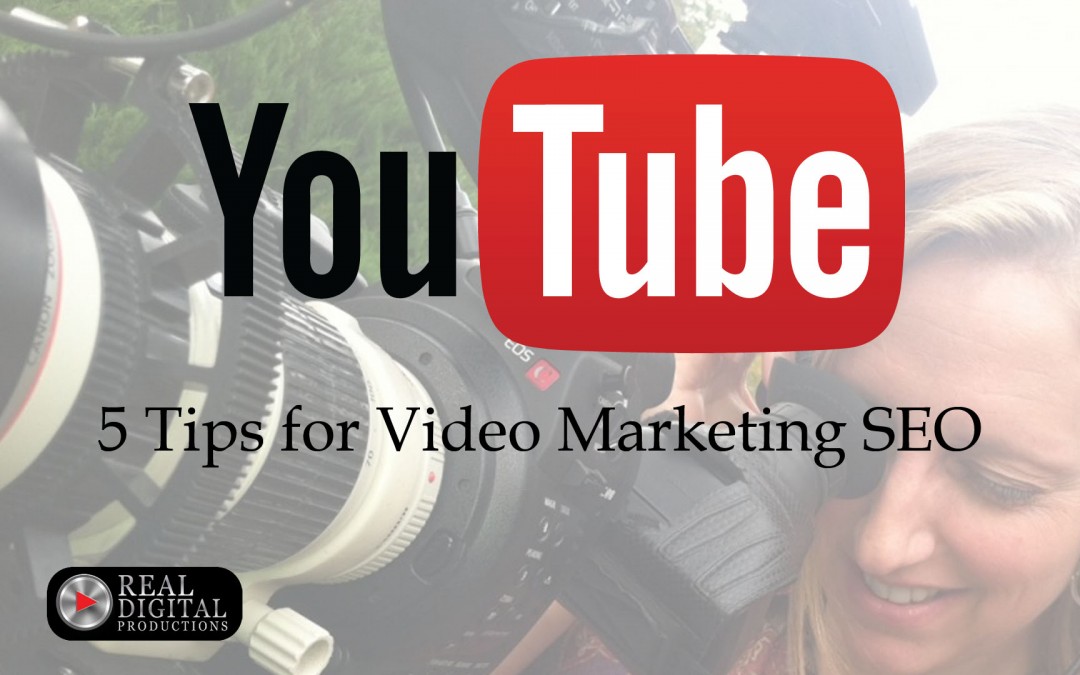Creating a content-rich, beautifully produced video is great. What’s not so great is if no one sees it. Search Engine Optimization or SEO has long been the at the top of business and web designers’ priority lists when it comes to their websites. And for good reason too. If people can’t find you, then they aren’t finding you. It’s hard for people to hear your message, buy your product or service, or donate to your cause. The same goes for marketing videos. While some of the elements are the same, video also has some of it’s own unique characteristics as well.
To start, let’s look at the big picture of online video. When it comes to search, YouTube is THE place to host your video. It is the second largest search engine, behind Google. Sure, Vimeo has a clean, beautiful layout and viewer ( it probably wouldn’t hurt to have a Vimeo channel as well) or you could host your videos on your own website, but since we are talking about video marketing SEO, we’ll keep the conversation revolved around YouTube.
So, how does YouTube rank videos? Just like Google, YouTube has it’s own set of algorithms. Some of the factors that YouTube takes into consideration are:
- number of views
- length of time someone watches your video
- how often your video appears in someone’s playlist
- number of positive rankings and comments
- number of subscribers you have
- how often the video is added to someone’s playlist
- how often the video was embedded in the web
Now that we have an idea of some of the basics of YouTube’s ranking algorithm, let’s see how we can optimize your video to start getting your numbers up. Here are 5 tips to optimizing your marketing video for SEO.
Use Keywords
Often, keywords are the perfect starting place for SEO. When you are writing the video title and description, be sure that you are using your targeted keywords in a natural way, that reads well and makes sense. Not only does YouTube and Google penalize for blatant “keyword stuffing”, it won’t make sense to your viewer.
Another benefit of strategic keyword use is that it has the possibility of ranking on both YouTube and Google. A simple test is to type in your keywords into Google and see if any videos appear in the results. If so, this tells you those keywords are effective in both Google and YouTube. If Google is showing video results for your keywords, than you know you’ve chosen well.
Maximize Your Title
A good title not only catches the attention of your viewer, but the attention of YouTube and Google bots as well. Pick the keyword or phrase that represents the main idea of your video and use it in your title. Not just anywhere either, try and use it as close to the front as possible. For example, if your long-tail keyword is “learn to sew”, write your title as, “Learn to Sew in 5 Steps”, rather than “5 Steps to Learn to Sew”.
Write a Complete Description
Since the bots at YouTube can’t actually watch your video, the description is one place where they get information on what content is in your video. This is where you can really include a lot of text, so take of advantage of it and fill it with keywords and long-tail keywords (of course, making it read naturally).
Depending on the format and content of the video, including a full transcript of the video in description can be a great way to get in your keywords, as well as being helpful to your viewer.
Utilize Tags
Tags are your way of organizing videos into groupings. They are not as broad as categories, but still perform the same function of organizing your videos in a way that users (and bots) and find them. Tags are not simply duplicates of your keywords, although there can be some overlap.
For example, lets say you have a video on changing the oil in your car. Your category can be “cars”, tags might be “maintenance”, “diy”, “Ford Fusion”, “2012” and some keywords could be “oil change”, “ford fusion”, “how to”, or “Penzoil”.
When using tags, try and pick ones that aren’t so specific that you will never use them again. Remember, they’re to help you organize your videos. Also, just like keywords, don’t go nuts by adding 83 tags to your video. 4-5 targeted tags will keep things simple and the YouTube bots won’t go crazy trying to figure out what your video is about.
Create a Video Sitemap
Video sitemaps provide Google and YouTube with metadata about your video. This metadata includes the video category, title, description, running time and intended audience.
The easiest way to create a video sitemap is to use an XML Sitemap Generator. If you are using WordPress, there are a number of plugins available to do this for you, such as the Video XML Sitemap Generator.
Go Out and Be Found!
So after you’ve created your next great video and have uploaded it to YouTube, don’t stop there. Take a little time and make sure it gets found. Other little things you can do to help are link building and constant sharing on your website, social media, emails, etc. The more it gets out there, the attention, views, links, and shares it will generate.
This post was inspired by: Video SEO Guide: Optimization Best Practices.

